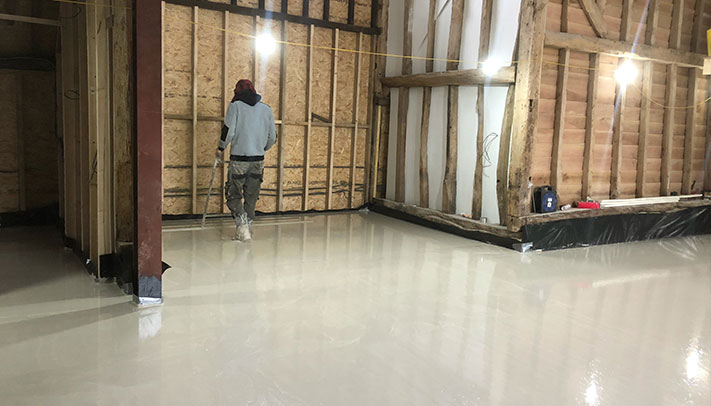At UK Screeds we are recognised as one of the foremost suppliers and installers of floor screeds and underfloor heating in the UK. Our head office is in Bampton in Oxfordshire, and we also have another one in London in the WC2 area.
We are a family-run business and have been operating since 2003. As such, we were one of the very first contractors in the UK to offer liquid screeds when they arrived in the UK. For very many years, a screed was made from a mix of sand and cement, but the liquid screeds that we supply use calcium sulphate in place of the cement. This has so many advantages that it can be difficult to know where to begin.
As floor screeding contractors in London, you can do no better than us when it comes to supplying and laying the screed that you require to cover the concrete substrate on your building project.
Delivered Pre-Mixed
Our screeds are all pre-mixed and delivered to site in a mixer truck. Once on site, all we have to do is to connect a very long hose and a pump to the truck so that the screed can be then pumped directly into position on the concrete substrate. Working this way, we can lay as much as 2,000 square metres of screed in a single day. Compare that with a sand and cement screed which has to be levelled out by hand by a worker who will only achieve around 100 square metres a day.
Since the screed is in liquid form it is self-levelling. It is the same as pouring out a cup of coffee or glass of water: the surface levels itself. Unsurprisingly, among other names, our screeds are also called self-levelling screeds.
A very big advantage of our services as floor screeding contractors in London is that when you are installing underfloor heating, as so many new builds do today, the screed will also completely envelop the heating pipes leaving no air gaps. Those are almost unavoidable with a hand-levelled sand and cement screed. That means that the heating is distributed evenly across the room.
In addition to that, the heat transfer properties of liquid anhydrite screeds are almost twice that of sand and cement. This means that when you turn the heating on, the room will heat up far faster, and it also means that it uses less energy to reach the desired temperature. What’s not to like?








